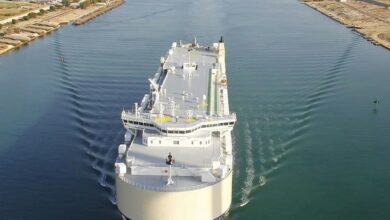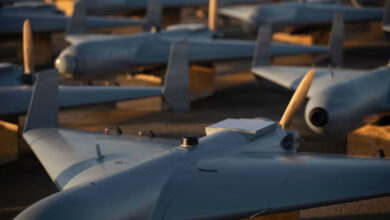Getting ready for the 12-hour drive from Cairo to the Halayeb triangle is not an easy task, namely because it is a sensitive area, about which there is little public information. We were not able to find simple things like weather forecasts, accommodation options, or available services.
This, of course, affected decisions like what clothes to pack or whether to bring sleeping bags and a tent. We agreed to bring a week’s worth of food, in case local food proved too difficult on our stomachs. In the end we decided to pack diversely: T-shirts, heavy jackets, mountain boots, slippers and sneakers, hats and gloves all found their way into our bags. We also bought two large boxes of mineral water, noodles, breakfast cereal, biscuits, cans of tuna and fava beans, and an outdoor stove. Unlike some travelers we had the luxury of space. Folding down the rear seats of our 4×4, we filled up with everything we thought we could need.
The Halayeb triangle is barely mentioned in most popular travel guides because from Shalateen south the area is closed to foreigners, except those visiting as a large group with a travel company. Even then, stays are usually limited to a few hours of walking around in the main market and having an early lunch in one of the few restaurants. We found this out after we spotted a group of tourists there and spoke briefly with their guide. In short, the triangle and the area surrounding it, in the heart of the eastern desert, are not stranger-friendly, and are definitely not for tourists.
Confronted with this information void, we initially thought that perhaps there was nothing to see, just sand plains, rugged mountains and camels. However, considering how protected it is, and its mentions in environmental journals, specifically as part of the Elba Protectorate, we had a strong hunch that it would be worth the 1200km drive.
The Gebel Elba Protected Area (GEPA), termed a “biodiversity hotspot” by the Ministry of Foreign Affairs, is home to over 450 plant species, 41 bird species, sub-saharan animals like gazelles and wildcats, and is the only natural woodland in Egypt. It also harbors 70 percent of Egypt’s threatened animal and plant species. Naturally, our first efforts went into trying to get there. This is when we hit our first obstacles.
We discovered that we needed permits. Our first line of contact was with environmental protection experts and rangers in the Red Sea area, who explained to us how closed off the area is. Visitors who aren’t there for a Ministry of Tourism-approved trip or university-supervised research are not welcome. Photography would not be allowed. Exceptions would be made only if the main environment center in Shalateen vouched for the visitors, a rare thing since extreme caution is always taken with those curious to visit the mountain. A visit to the Ministry of Defense’s operations department confirmed this as well. The only option left was to take the risk and try and get into Shalateen, and convince officials there to give us the necessary permits to take our car deeper into the south and into the heart of Elba.
On the map, the road extended in a clear thick line until Marsa Alam, but after that it thinned out. It wasn’t clear what that would mean for road conditions. Since initial research yielded very little information, it felt like a trip into the unknown.
One of our main worries was the car. It was an old model that had not been maintained for years and had no service history to refer to. The prospect of something breaking down while we were deep within the mountains was always on our minds. Three days before the drive down, the car decided to hemorrhage cooling fluid, and thus quickly overheat. This warranted a visit to the mechanic, who conveniently discovered many problems and soon-to-be problems. It seemed like a miracle that the car could move in the city as it was. After a struggle to find the overpriced spare parts and spending days at the workshop, the car was good to go.
We started late. Late-night preparations meant oversleeping in the morning and in turn getting behind on our schedule before the trip had even started. We also made the mistake of leaving some purchases to the last minute, and so on the morning of the drive we found ourselves negotiating Cairo traffic to find supermarkets open at 7:30 AM. There was a sense of entrapment. We wanted to get out, to leave, and instead we were stuck. At about 8:30 AM we were finally on the road, more than two hours later than we had initially planned.
The path we set was fairly simple: take the Cairo-Ain Sokhna road east until the Red Sea, then follow the road all the way south. The relatively new Ain Sokhna road was an easy drive, but the part that followed until Za’afarana was perilous. With the azure sea to our left, and the towering mountains to our right, this leg of the route was probably the most scenic and would have been the most fun if it wasn’t for the behavior of other drivers. The road had the makings of a perfect rally race track, and it seemed like some motorists thought it actually was one. At Za’afarana, we were greeted with endless rows of rotating windmills.
Four hundred and fifty kilometers later, we arrived at the first significant stop on the way, Hurghada. While we shunned touristy resort cities, it seemed like a good place to rest and have a meal. We took a drive around town, and then settled on a seafood restaurant that seemed like a safe bet. The waiter in the restaurant was a good salesman, and while we requested his suggestions for a light meal, he convinced us, helped along by our hunger, to order more food than we could handle. Seafood soup, a large grilled fish and myriad mezzes on the side. The result was that we felt bloated and tired and spent about an hour in the restaurant.
Realizing how behind schedule we were, we tried to get out of the city quickly, but the signs kept us going in circles at a frustrating speed limit of 60km per hour. After asking around, we eventually found our way back on track.
The road south passes through many towns. Life in Safaga seemed to revolve around the port where boats sail to Saudi Arabia carrying pilgrims and visitors to the holy mosques. The largest town, el-Quesseir, seemed to be more dead than alive. Every now and then there would appear a handful of shanties on both sides of the road, which apparently warranted a town name and speed bumps on both their entrance and exits, which could be less than a kilometer apart. By then the sun had started setting, and we hadn’t made it to Marsa Alam, our safe point. All hopes of arriving on the same day had been obliterated by oversleeping and overeating. Sloth and gluttony were our first sins, and now we were paying the price.
Our fears of mechanical failure proved unfounded, but instead the car failed electrically. The headlights went dark. We had the choice of using the high beam or the fog lights. The high beam was not appreciated by anyone else on the road and seemed not to light the road but rather the emptiness above. The fog lights kept bouncing around with every bump. Moreover, the high beam and the fog lights refused to stay on, and one hand had to constantly stay on the switches. The roads were not lit so the only way to cut through the pitch-black was to sometimes use both lights at the same time.
Neither of us had been to Marsa Alam before, and the only information we had about accommodation was the name of a diving camp 12km south of the city. Trying to reach the camp area at night proved difficult for first-timers, as the camps are faintly lit and their signs by the road disappear into the night. The roads kept splitting and merging without any signs or indication as to which branch went where. Because of the dark, these splits were not readily visible and we suddenly had to make split second decisions to avoid crashing. Added to that that, some of the roads were still under construction, and the way this was signaled to drivers was by spreading rocks on the ground. This would work fine in the morning but at night they are a good method to kill drivers.
We found ourselves arriving at a lit police check point, where an old policeman, who spoke in a kind and affectionate manner, directed us back to the camps. It still took us a couple of trips back and forth until we managed to find the sand tracks leading to them. We were relieved to be off the road and safe at last.
There are at least three working camps at Marsa Alam: Deep South, Aquarian, and el-Qubtan Wael’s. We took a stroll across each of the camps to check options and prices. Aquarian was the obvious choice because of its comfortable and clean huts and bungalows. The latter were situated higher up on the sand hills with a view of the sea, had en-suite bathrooms and cost LE150 per night. This camp was also the most populated, in comparison with the other two where dogs were the only available company. Lights go off at midnight, a blessing when you are trying to enjoy a quiet night under starlit skies. The pleasant, engulfing silence was one thing that marked nighttime during the rest of the trip.
The next morning we were up at our leisure. We had only 260km left to arrive at Shalateen, and we knew it would be difficult to both obtain permits and start moving into the mountain on the same day. Breakfast at the camp was a mix of things that didn’t work well together. Wrapped in cling film, the plate featured a boiled egg, a crepe that seemed to be three days old, hotel-sized servings of honey and jam, cheese, and a piece of stale bread. A pot of yogurt was added to the side. While one of us boycotted most of the food, the other spent some time in the shared bathrooms after his stomach refused to process it. This was a good sign to start taking the medicine we had brought with us.
We were back on the road and it was good to see where we were driving again. On both sides, the desert spread endlessly, and the sea view was gone. The only interesting site was an open truck passing by carrying its load of camels, who did not seem to care that they were tied up side by side. The trucks were the first sign that Shalateen’s camel market actually exists. The scenery changed slowly and the color of the rocks faded from reddish brown to yellow. It was a landscape we had not seen before in all our travels inside Egypt. This was a subtle hint that the rest of the trip was not going to be like any other.
Eventually we arrived at the infamous army checkpoint, where to the left you enter Shalateen and straight ahead takes you into the triangle. We were stopped and questioned, and we negotiated to get into Shalateen. They recorded our license plate numbers and driving license details and slowly pushed aside the barrels that blocked the road. This was the cue for our eyes to widen, our backs to straighten and our hearts to beat faster. We were in.
Shalateen and Back Again travel series continues every Wednesday. Next week, Amr El Beleidy and Pakinam Amer write about how their presence disturbed the peace of this small town and recount their first impressions.




